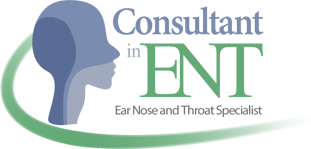Sleep & Snoring
Snoring
At least 20% of the adult population snore regularly and loud enough to disturb those around them. People who are overweight are much more likely to snore than those who are the correct weight for their height. Gaining weight makes existing snoring worse and losing it makes snoring better. Snoring gets worse with age. Men are three times more likely to snore than women, but of course women are also afflicted. After the menopause women tend to catch men up.
Alcohol makes snoring worse. Smoking makes snoring worse. Snoring may run in families. If you have a blocked nose at night, this may cause snoring. Correcting the nasal abnormality may reduce the snoring. Often lying on your side reduces snoring, particularly if it is not very severe. If you have specific problems with your nose and/or throat treatment options will be discussed with you.
Obstructive sleep apnoea
Obstructive Sleep Apnoea occurs when the muscles at the back of the throat actually block the passage of air, which stops the sufferer’s breathing momentarily. The brain then has to kick-stark the breathing process in order to obtain oxygen, which wakes the sufferer up. Sufferers can be seen to be struggling for air and tend to wake with a loud grunt or snort. Sometimes they actually hear their own snoring and if a snorer is waking himself up at night, it is often because of sleep apnoea. Apart from causing restless sleep, the sufferer may be very tired in the daytime because of the disturbed sleep. Such people may find it difficult to stay awake even when doing important tasks such as driving a vehicle.
Sleep apnoea and snoring are part of the same condition. Bad snorers tend to develop sleep apnoea. Occasional stopping of breathing during sleep is not unusual. This can happen up to four times an hour and not be important, but if it is happening regularly and causing sleep disturbance and tiredness, it may well be significant. You may need to undergo a sleep study and if clinically significant obstructive sleep apnoea is diagnosed, a specific treatment (in adults) may be recommended: “Continuous Positive Airway Pressure” (CPAP) treatment. This involves wearing a mask over your nose at night. The mask gently blows air into you all the time, holding the airway open during breathing. Sometimes medical or surgical treatment is required to unblock a nose for the CPAP to work properly and occasionally, obstructive sleep apnoea in adults can be treated with tonsil surgery. Obstructive sleep apnoea can commonly be treated in children with tonsil and / or adenoid surgery.
Children
Snoring and obstructive sleep apnoea is common in children. Please see the page on children for more information.
Surgical procedures
- Septoplasty
- Coblation turbinoplasty
- Coblation reduction of tongue base
- Coblation uvulopalatoplasty
- Coblation intracapsular tonsillectomy
Disclaimer: This publication is designed for the information of patients. Whilst every effort has been made to ensure accuracy, the information contained may not be comprehensive and patients should not act upon it without seeking professional advice.



